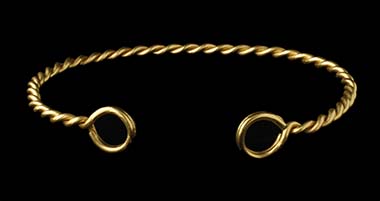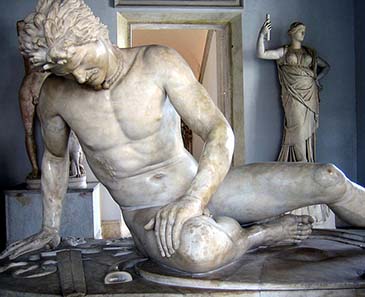October 7th, 2010 – On September 30th, 2010, Spink / London sold a fine and rare gold Torc, from the Iron Age of Great Britain, for £50,700 at their auction in London. The “Diss” Torc, dated c. 150 to 50BC and so named because it was discovered in the Diss area of Norfolk, was purchased anonymously.
When the torc was originally found it was not recognized as such a rare and valuable item. However, when brought into Spink earlier this year it was immediately identified as a gold torc. It is very similar to others found in East Anglia in the famous Snettisham finds now housed in the British Museum. After completion of the treasure review process it was returned to the owner with confirmation that it was indeed an Iron Age gold torc. Spink was then asked to offer this prestigious item for sale.
Dying Gaul. Photo: antmoose / Wikipedia.
Gold torcs are extremely rare and among the finest examples of pre-Roman Celtic metalwork. The word ‘Torc’ actually comes from the Latin word Torquis, which literally means “to twist”. This is a fitting title for such an item as the Torc resembles a necklace of thick twisted wires of gold. Many will recognize this piece immediately from the Hellenistic sculpture of The Dying Gaul, who is wearing a torc around his neck. The Torc was a symbol of high social standing in the Iron Age.





